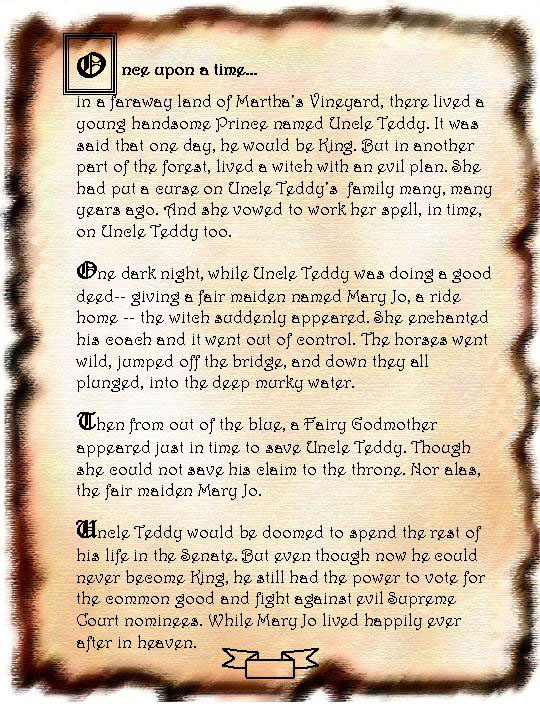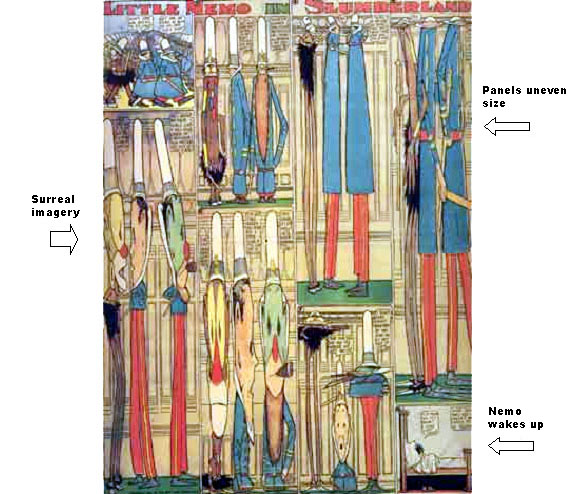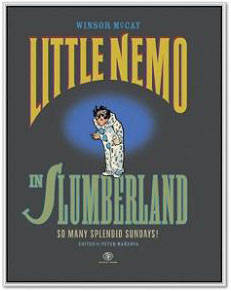February
2006
Ted Kennedy Has
Written a Children's Book
We came across a press release
last month indicating that:
“Ted Kennedy has
written a children’s book, My Senator
and Me: A Dog’s-Eye View of Washington, D.C.,
to be released by educational publisher Scholastic
this coming May.”
In so doing, the senior Senator from Massachusetts
joins an ever growing and diverse list of celebrities who
have penned children’s books. They include the likes
of: Jerry Seinfeld, Julie Andrews, Bill Cosby, Jay Leno, soccer
star Mia Hamm, former NY Mayor Ed Koch, Dr. Laura Schlessinger,
Duchess Sarah Ferguson, Jimmy Carter, Director Spike Lee,
James Carville, Katie Couric, John Travolta and even Madonna
and…we’ll stop right here. You get the idea. A
lotta lotta people!
The press release goes on to state that:
“The book explains how a bill becomes
law; the roles of Congress and the Senate in the U.S.
system of government.”
This 56 page book promises to be, in a word—
B-o-o-o-o-r-r-r-r-r-ing!!
And this is really too bad, as the Senator is
sitting on one heck of a story that can be told in just one
page, and yet be every bit as adventurous as anything J. K.
Rowling can turn out.
For example, in just taking a blind stab at
this, we already believe we’ve come up with something
a whole lot more compelling than what the Senator has planned.
Here goes.

*
*
*
Writer’s
Block or… Six Authors in Search of a Character?

Having finally gotten around
to reading what is considered the classic novel of
the immigrant experience in early 20th century America, Call
It Sleep by Henry Roth, we
found it indeed to be fabulous and worthy of its reputation.
But upon finishing this robust book with its effusive prose,
we could not help recall hearing, that this is the same Roth
who had had such a notorious case of Writer’s Block.
This in turn led us— off the top of our
head— to quickly number five other equally riveting
cases of WRITER’S BLOCK. Classic cases of important
writers of a generation, who apparently suffered from this
malady big time. Their names are inscribed in the literary
Rubik’s cube above.
As a poet and writer, this of course, would
be a subject close to our heart. But it can also be of interest
to anyone who has ever experienced other forms of so called
“blocks,” or wondered about what it is that nourishes
or suffocates the creative process. And let’s face it,
there is a certain comfort in the messages that read loud
and clear: we’re not alone!… and
that yes indeed, misery does love company. Especially
when the companions are geniuses who can’t get their
car out of “Park.”
First off, a working definition of what we mean
by Writer’s Block, is in order. While there is no hard
fast definition—in fact some don’t even think
it is something that exists—essentially for our purposes
here, it consists of four components:
• a writer of tremendous
talent
• who has been acknowledged and rewarded by literary
experts and the general reading public alike
• who has not published anything over an extended
period of time
• for no apparent or stated reason
The source of much of the information in putting
this piece together, was an excellent article that appeared
in The New Yorker (“BLOCKED Why do writers
stop writing?” By Joan Acocella; issues June 14 and
21, 2001; heretofore referenced by TNY).
http://www.newyorker.com/fact/content/?040614fa_fact
Henry Roth (1906-1995)
His first novel Call It Sleep
was published in 1934 when he was twenty-eight. It got little
notice. It was reprinted 30 years later (1964) in paperback
and became a sensation.
He didn’t start on his second novel until
1979 which turned into a four volume tome entitled Mercy
of a Rude Stream; the first volume of which
appeared in ’94 a year before his death.
In effect, he went 60 years between publication
of his first and second novel! And then seemingly, he tried
to make up for lost time, by going out in one last big hurrah.
He had, by the way, the good sense to call his autobiographical
work, novels and not memoirs, lest he get “Frey-ed”.
(We couldn’t resist).
Joseph Mitchell (1908-1996)
This writer is particularly close to our heart,
as he wrote pieces about real people and real places, many
of which we knew from our wondrous youth growing up on the
Lower East Side of New York.
We will quote TNY
piece here directly, which confirms what we once heard Tina
Brown, former editor of that magazine, say at an advertising
luncheon one afternoon.
“A story that haunts the halls of
The New Yorker is that of Joseph Mitchell who
came on staff in 1938, wrote many brilliant pieces, and
then, after the publication of his greatest piece, ’Joe
Gould’s Secret,’ in 1964, came
to the office almost every day for the next 32 years,
without filing another word.” (The underline
is ours).
Tina said that they would hear typing…but
alas, no copy ever emerged from behind that closed door. TNY
goes on:
“In a series of tributes…upon
Mitchell’s death…Calvin Trillin recalled hearing
once that Mitchell was ‘writing away at a normal
pace until some professor called him the greatest living
master of the English declarative sentence and stopped
him cold.’“
Imagine what would have happened if this professor
had spoken ill of him?
Truman Capote (1924-1984)
“Rediscovered” via the excellent
movie Capote and Philip
Seymour Hoffman’s extraordinary performance
as the title character, we now all know that he never finished
another book after the publication of In Cold
Blood in 1966.
For the last 18 years of his life, he was at
work— in fits and starts— on what was to be a
major novel Answered Prayers. But
alas, it was still incomplete at the time of his death; the
prayer of matching his previous success going unanswered.
Of course with Capote there is always the issue
of his alcoholism. In fact it seems to be an occupational
hazard. TNY piece notes that five
of the seven native-born Americans awarded the Nobel Prize
for Literature, were alcoholics. But it does raise a question.
To wit:
“when an alcoholic writer stops writing,
do we call this a ‘block’ or just alcoholism?”
Harper Lee (1926- )
A childhood friend of Capote’s, she too
is a very prominent figure in the Capote
movie as she was in Truman’s life.
She published her first novel, To
Kill A Mockingbird in 1964 at age 34 and it
became an immediate best seller and won a Pulitzer Prize.
But beyond that, it has been a fixture on required reading
lists of High Schools and Junior High Schools in America for
these past 45 years. And, of course, it was turned into an
Academy Award winning film of the same name in 1962.
She never published a second novel.
She continues to live a quiet, almost reclusive
life in Monroeville, Alabama, where she was born and raised.
She did come to LA in June of 2003 for Gregory Peck’s
Funeral mass and memorial at Los Angeles Cathedral (where
the actor’s body is interred). Our parish priest reports
that she is a sweet and endearing woman, and there are no
apparent outward signs of eccentricities which would suggest
why she was “just” a one-book wonder.
That we all could have but one hit in our lives,
of such enduring magnitude: 10,000,000 copies sold since 1960
making it one of the best-selling novels of all time..
Footnote: And so a day
after writing this, there’s a picture of Harper Lee
right on the front page of The Arts section of The New York
Times (January 30, 2006) at an awards ceremony for an essay
contest on the subject of “To Kill A Mockingbird.”
Well we did say she was almost a recluse.
Ralph Ellison (1914-1994)
Ellison was also a hit right out of the box.
His first novel published in 1952, Invisible Man,
was a best seller.
“It was an ‘art’ novel,
a modernist novel, and it was by a black writer. It therefore
raised hopes that literary segregation might be breachable.
In its style the book combined the arts of black culture—above
all, jazz—with white influences: Dostoyevsky, Joyce,
Faulkner.” (TNY)
Beyond being just a writer, he was virtually
a hero, being awarded the Presidential Medal of Honor by Eisenhower.
But there would be no second novel. This, despite
having worked on it for 40 years!
When he died at the age of 80, he left behind
more than 2,000 pages of manuscript and notes. His executor
pieced together a novel out of it, something called Juneteenth
and published it in 1999. Hardly a success.
J(erome).D(avid).
Salinger (1919- )
Perhaps one of the most enigmatic writers in
the history of American Letters, he burst on the scene in
1951 with The Catcher In The Rye.
Word for word, this has got to be one the best of our literary
classics— it’s only about 200 pages long. Salinger
tended to “write short”. Short stories; short
novels; novellas.
After “Catcher” hit the scene, Salinger
retreated from public view and began a life as one of the
most interesting and sought after recluses this side of Howard
Hughes. Going in search of Salinger has become a sport for
many of his still rabid fans. Some of whom, unfortunately,
are a bit misguided and read their own message into the book.
On the night when Mark Chapman murdered John Lennon, he was
toting a copy of The Catcher In The Rye, which he
was calmly reading when the police arrived on the scene.
While Salinger has not published anything
in over 40 years, there is much speculation that he has been
writing all this time. And there is always the hope that upon
his passing, this work will be made public. He is now 87.
And in his longevity, you get the sense that he is purposefully
busting our chops.
*
*
*
In the Department of:
Short-Poem-for-a-Short-Month-having-nothing-to-do-with-Shortness
Antithetically Speaking
Without the arts
we are the ants:
heavy lifters
of crumbs;
the masters of
the commute to and fro;
noble
negligible;
crashers at The Big Picnic.
*
*
*
Master of American Comics
and one Winsor McCay
For those of you living in LA, there is a wonderful exhibit
in progress until March 12, 2006 entitled Masters
of American Comics, in joint display at The
Hammer Museum in Westwood. www.hammer.ucla.edu
and The Museum of Contemporary Arts www.moca.org
.
Featuring the works of fifteen “cartoonists”,
the raison d’etre for this exhibit is to provide insight
into the medium of comics as an art form. Or to quote
the press release:
“This exhibition has been founded on the premise
that comics are a bona fide cultural and aesthetic practice
with its own history, protagonists, and contribution to
society, on a par with music, film, and the visual arts,
but is still in need of the kind of historical clarification
that has been afforded those other genres.’
Amen. Hey, you had us on: “This exhibit has been founded…”
For we grew up with the “Sunday funnies” and the
comics in our lives; a key source of entertainment in a pre-video-game
age. And so we were familiar with many of the comics or their
illustrators that were presented in this exhibit, including
the likes of Dick Tracy (Chester
Gould), Popeye (E.C. Segar), Peanuts
(Charles Schulz), Terry and the Pirates and Steve
Canyon (Milton Caniff), Gasoline
Alley (Frank King) and Mad Magazine
(Jack Kurtzman).
And then there were those we had never heard including one
in particular that caught our eye and captured our imagination:
Winsor McCay (1867-1934).
He is acknowledged to be the first master of both the comic
strip and the animated cartoon. His masterpiece was a comic
strip that was first published in the New York Herald in 1905
entitled Little Nemo in Slumberland.
The man was so far ahead of his time he might have been a
product of the 60’s what with his surrealistic approach
and use of a sort of “op art”, his refusal to
“stay within the lines” and a style that suggests
the use of hallucinogens while at the drawing board. The imagery
of many of his strips is at once filled with lovely childhood
evocations and yet a sense of the dark, the grotesque, the
foreboding.
The premise was always about a young boy, Nemo, who upon
falling asleep, would drift off into a bizarrely graphic and
distorted dream, from which he would awaken in the final panel.
The reprint below from 1905, will provide some sense of the
strip, though the captions here are not readable.

And now Winsor McCay is in the process of being rediscovered
big time. A giant book retailing for $150 was published in
2005 with a second printing due in March of this year.
 Winsor
McCay’s masterpiece, Little Nemo in Slumberland, as
it has never been reproduced before. A magnificent limited
first edition hardbound volume with Nemo's best from 1905-1910,
FULL original newspaper size. An essential piece of American
cultural history. 16x21 inches, 120 pages. Winsor
McCay’s masterpiece, Little Nemo in Slumberland, as
it has never been reproduced before. A magnificent limited
first edition hardbound volume with Nemo's best from 1905-1910,
FULL original newspaper size. An essential piece of American
cultural history. 16x21 inches, 120 pages.
We invariably can’t help but wonder whenever looking
back at a piece of pop culture that was so ubiquitous in its
time, what will happen to the “big hits” of our
time. Will South Park, for example,
be rediscovered and be the subject of a museum retrospective
100 years from now?
*
*
*
fini
|














